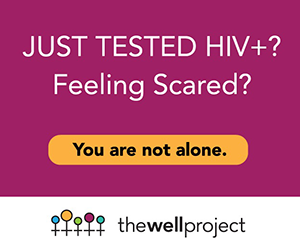
Lea esta hoja informativa en español
Table of Contents
- What Are HIV Treatment Guidelines?
- US-Based Guidelines
- Global Guidelines
- Key Information in the January 2024 US HHS Perinatal HIV Clinical Guidelines
- Taking Care of Yourself
What Are HIV Treatment Guidelines?
HIV treatment guidelines provide a lot of useful information to help healthcare providers and people living with HIV make decisions about numerous HIV-related health concerns. These include when – and with which medications – to start, stop, or change HIV treatment. There are specific guidelines for people living with HIV who are pregnant or have given birth, which also offer guidance on how to feed their infants.
The perinatal HIV clinical guidelines are prepared by groups of physicians and other professionals with special expertise in HIV treatment and prevention during pre-pregnancy, pregnancy, and the perinatal and newborn periods.
US-Based Guidelines
A branch of the US government called the Department of Health and Human Services (HHS) has put together a set of HIV treatment guidelines. There are several different treatment guidelines related to HIV care, including:
- Guidelines for the Use of Antiretroviral Agents in Adults and Adolescents Living With HIV, which are the general US HIV treatment guidelines
- Recommendations for the Use of Antiretroviral Drugs During Pregnancy and Interventions to Reduce Perinatal HIV Transmission in the United States – also known as the perinatal HIV clinical guidelines – which are prepared by a group of physicians and other professionals with special expertise in HIV treatment and prevention during pre-pregnancy, pregnancy, and the perinatal (immediately before, during, and after childbirth) and newborn periods
- Guidelines for the Use of Antiretroviral Agents in Pediatric HIV Infection, which provide treatment recommendations for children living with HIV
Most of the information in this fact sheet is to provide an overview of the perinatal HIV clinical guidelines. See our fact sheet on HIV Treatment Guidelines for more information on the adult and adolescent HIV treatment guidelines. For information on caring for children living with HIV, see our fact sheet on Care and Treatment for Children Living with HIV. See also our fact sheet on Pregnancy, Birth, and HIV for more information on having biological children while living with HIV.
All of the HHS HIV guidelines are written and reviewed regularly by groups of HIV experts, including researchers, healthcare providers, and community activists. They have been updated many times as new information and new medications become available. The full version of the perinatal HIV clinical guidelines is available here (PDF).
Global Guidelines
HIV treatment guidelines can vary based on where you live in the world. Like the US, many countries and regions have their own HIV treatment guidelines based on circumstances in that area of the world, including availability of different HIV drugs and other resources. The World Health Organization (WHO) is a massive agency that leads public health efforts worldwide and produces global guidance on HIV testing, treatment, prevention, care, and services – including during the perinatal period.
All internationally written guidelines are in agreement about certain aspects of HIV treatment. For instance, since 2015, the HHS, WHO, EACS (European AIDS Clinical Society), BHIVA (British HIV Association), and the IAS-USA (International Antiviral Society-USA) have all recommended that HIV treatment be offered to all people living with HIV, regardless of their CD4 cell count. Research has shown that people living with HIV who start treatment earlier, while their CD4 counts are still high, have a much lower risk of illness and death.
HIV treatment guidelines can vary based on where you live in the world.
However, HIV guidelines can differ between regions on many other details. Infant feeding while living with HIV is one example. The WHO recommends that people living with HIV breastfeed their infants if they are taking HIV drugs and live in an area of the world where formula feeding may not be a safe option. Studies of women living with HIV and their infants in resource-limited areas like sub-Saharan Africa and India have shown that the likelihood of transmitting HIV while breastfeeding can be as low as less than 1 percent if the birthing parent is taking effective HIV drugs.
On the other hand, birthing parents living with HIV in so-called high-resource regions, such as the US or Europe, have been told for many years not to breastfeed their babies. The EACS and BHIVA guidelines recommend that people living with HIV avoid breastfeeding since infant formula, clean water to mix it, and refrigeration to store it tend to be readily available in these areas (though that is not always the case). These guidelines are based on the belief that even an extremely low likelihood of a baby getting HIV from breast milk is not justified when alternatives are available but they have tended not to address other important factors affecting infant-feeding decision-making. For instance, parents may want to consider breast/chestfeeding for important emotional, cultural, family, and health reasons, even if they live in an area where formula is easily accessible.
A significant change occurred on January 31, 2023, when the US perinatal HIV clinical guidelines were updated to remove language discouraging breastfeeding. They now reflect current knowledge about the low likelihood of HIV transmission through breast milk when the breastfeeding person is taking HIV drugs and has an undetectable viral load; and recommend that healthcare providers discuss infant feeding options with women and other birthing parents living with HIV and engage in shared decision-making.
In previous years, HHS, BHIVA, and EACS HIV treatment guidelines had begun to include updates acknowledging the desire of some women living with HIV to breastfeed and suggesting ways for providers to support parents considering this option. BHIVA's guidelines, like the updated perinatal HIV clinical guidelines, stress informed infant-feeding decision-making and support for parents considering breastfeeding.
Click above to view or download this fact sheet as a PDF slide presentation
Key Information in the January 2024 US HHS Perinatal HIV Clinical Guidelines
The guidelines for pregnant people were updated in January 2024. Below is a summary of new recommendations from the current perinatal HIV clinical guidelines.
Preventing HIV Acquisition in the Pregnant Person with Pre-Exposure Prophylaxis (PrEP)
People with vaginas should take oral pre-exposure prophylaxis (PrEP) every day, not just episodically ("on demand"), and use Truvada (tenofovir disoproxil fumarate/emtricitabine) rather than Descovy (tenofovir alafenamide/emtricitabine) for this purpose. If they want to stop PrEP, they should continue to take it for 7-28 days after the last time they could have acquired HIV.
Pregnant people taking any form of PrEP should register with the Antiretroviral Pregnancy Registry as soon as possible to allow researchers to collect data that may help change these recommendations.
Caring for People Living With HIV Who May Become Pregnant
Healthcare providers should discuss pre-exposure prophylaxis with all people who are not living with HIV and offer it to anyone who wants it.
People who want to become pregnant and are on the long-acting injectable HIV medicine Apretude (cabotegravir) should switch to daily oral (by mouth) HIV drugs a year before trying to conceive. This prevents any traces of cabotegravir from still being in the parent’s body when they become pregnant. We do not yet know how safe cabotegravir is for the unborn baby.
The guidelines recognize that daily oral medications may not be an option for everyone. If the person wanting to get pregnant has difficulty taking their medications as prescribed, they and their health care provider should decide together whether switching to oral drugs is a good idea.
Getting Pregnant When One Partner Lives With HIV
Healthcare providers should discuss pre-exposure prophylaxis (see above) with all people who are not living with HIV and offer it to anyone who wants it. This includes people who want to get pregnant.
Depending on the individual situation, people who want to conceive should be screened for infections in their genital tract, such as sexually transmitted infections.
For more information on conceiving a child when one or both partners are living with HIV, see our fact sheet on Getting Pregnant and HIV.
HIV Drugs During Pregnancy
People who are already taking HIV drugs and are virally suppressed (very low levels of virus in the body) before becoming pregnant are generally advised to continue taking the same medications.
For people who have not taken HIV drugs before becoming pregnant (called "antiretroviral-naive"), or who have taken HIV drugs before but are not taking them when they get pregnant, it is important to start treatment as soon as possible. The guidelines list certain combinations as preferred for antiretroviral-naive pregnant people, and recommend different drugs for people who have taken long-acting Cabenuva (cabotegravir/rilpivirine) as pre-exposure prophylaxis.
People who are already taking HIV drugs and are virally suppressed before becoming pregnant are generally advised to continue taking the same medications.
People who are taking HIV drugs but who are not virologically suppressed (their viral load is 200 copies/mL or higher) should have their drug regimen changed rather than having a single HIV drug added to their existing regimen. The guidelines note the lack of information on how safe certain recent medications, including the newly added drug lenacapavir, are in pregnant people.
Our HIV Drug Chart includes information on what is known about specific drugs during pregnancy and breastfeeding. In many cases, little information is available because pregnant people are often not included in clinical trials for medications, including for HIV drugs.
Infant Feeding and HIV
The information in this section is from the 2023 update to the guideline. HHS expects to update this topic in April 2024.
The updated US perinatal HIV clinical guidelines now encourage informed, shared infant-feeding decision-making for women and other birthing parents living with HIV. They also discuss various potential benefits of breast/chestfeeding, and advise that healthcare providers inform parents living with HIV about the very low chance of transmitting the virus through breast milk when the parent is virally suppressed.
A growing number of studies are showing that infants are remaining HIV-negative during breast/chestfeeding when the lactating parent is on HIV treatment and has an undetectable viral load.
These updated guidelines still recommend formula or screened donor milk feeding for infants whose parent's viral load is not undetectable. They also recognize that, even in the US, not everyone has access to safe water or sufficient formula. Recent events, such as the polluted water supply in the US city of Flint, Michigan, and a shortage of formula due to the temporary closure of a factory, have made this clear.
Healthcare providers are offered guidance to counsel birthing parents around their infant-feeding options, and to support their decisions on how to feed their babies without judgment. The guidelines specifically state that Child Protective Services should not be called if a parent living with HIV decides to breast/chestfeed their infant.
A database in Great Britain has so far recorded 90 babies born to people living with HIV who were breastfed. None of the infants acquired HIV. A growing number of studies are showing that infants are remaining HIV-negative during breast/chestfeeding when the lactating parent is on HIV treatment and has an undetectable viral load. Our fact sheets Can I Breastfeed While Living With HIV? and Overview of Infant Feeding Options for Parents Living with HIV have more information on this topic.
Caring for the Newborn
The information in this section is from the 2023 update to the guideline. HHS expects to update this topic in April 2024.
It is recommended that infants born to people living with HIV receive HIV drugs to prevent them from acquiring HIV. The specific drugs and how long they should be given depend on the birthing parent’s HIV treatment status and viral load, as well as whether the infant is breast/chestfed.
It is recommended that infants born to people living with HIV receive HIV drugs to prevent them from acquiring HIV.
If the parent was taking HIV drugs during pregnancy, continues to take them as prescribed, and was virally suppressed at least four weeks before giving birth, the infant should be given zidovudine for four weeks after birth. If the parent was not taking HIV drugs during pregnancy, was not virally suppressed four weeks before delivery, or has primary/acute HIV (acquired HIV in the past several months), the infant should be treated with multiple HIV medications for two to six weeks to prevent them from acquiring HIV. Infants who are breastfed should be treated to prevent them from acquiring HIV.
Only certain HIV drugs are recommended for very young children, and the recommendations are different for infants born very prematurely (before 32 weeks after the parent’s last menstrual period). Healthcare providers in the US can call the National Perinatal HIV Hotline at (888) 448-8765, 24 hours a day, seven days a week, to get help in making treatment decisions in specific cases.
Other Information
The perinatal HIV clinical guidelines also include information on procedures to avoid during delivery, caring for people who do not know their HIV status when they are going into labor, and many other issues. There is also a section about pregnancy in transgender and gender-diverse people. In general, the same recommendations for HIV prevention, testing, and treatment apply as for cisgender pregnant people, but hormones taken for transitioning may need to be addressed in the context of pregnancy. These guidelines emphasize the need for gender-affirming shared decision-making between provider and patient.
Taking Care of Yourself
The perinatal HIV clinical guidelines are a set of recommendations to help you and your healthcare provider understand your treatment choices. They are based on the most up-to-date information from studies and clinical trials. But remember, they are only general suggestions. It is okay for you and your healthcare provider to choose therapies and approaches for your specific situation. Use the guidelines as a resource to help you and your provider make well-informed health decisions that are right for you and your family
Special thanks to Lealah Pollock, MD, MS, of the University of California – San Francisco, for additional review of the extensive 2023 update to this fact sheet.



